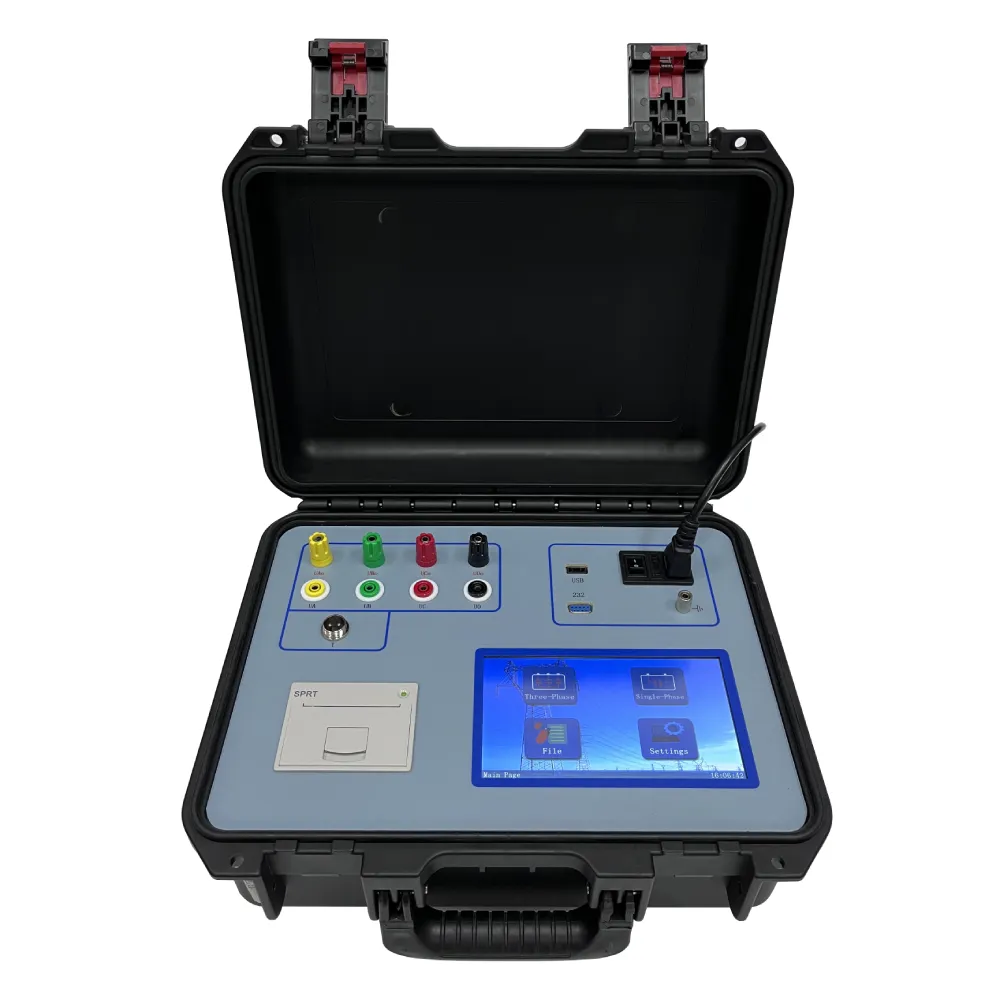 English
English


Comprehensive Guide to Circuit Breaker Testing Tools for Effective Trip Testing Solutions
Understanding Breaker Trip Testers Ensuring Electrical Safety
In the realm of electrical engineering and maintenance, safety is paramount. One crucial aspect of electrical safety is ensuring that circuit breakers function correctly to protect both equipment and personnel from electrical faults. This is where breaker trip testers come into play. These devices are designed to verify the operational integrity of circuit breakers, ensuring they trip at the correct fault levels and within the necessary response times.
What is a Breaker Trip Tester?
A breaker trip tester is a specialized device used to simulate fault conditions in an electrical circuit. By applying a controlled overcurrent through the circuit breaker, the tester checks whether the breaker responds appropriately by tripping and interrupting the circuit. This process is essential for ensuring that circuit breakers are capable of protecting against overloads and short circuits, which can cause significant damage or even pose hazards to life.
Why is Testing Important?
In industrial and commercial settings, electrical systems are complex and often subjected to considerable stress. Aging equipment, environmental factors, and even routine maintenance can lead to the degradation of circuit breakers over time. A breaker that fails to trip during a fault can result in catastrophic outcomes, including electrical fires, equipment failure, and personal injury. Regular testing with a breaker trip tester helps mitigate these risks by ensuring that protective equipment functions as intended.
How Does a Breaker Trip Tester Work?
Most breaker trip testers operate on a straightforward principle. They generate a current that exceeds the breaker's rated capacity for a specific duration, effectively mimicking conditions that would cause a trip. Here’s a step-by-step overview of the typical process
1. Preparation The technician disconnects the electrical supply to the circuit breaker and connects the trip tester to the terminals of the breaker. 2. Setting Parameters The tester is configured to produce a specific current level and duration, targeted to the breaker's specifications (e.g., the nominal current and trip time).
breaker trip tester

3. Testing Phase Once settings are in place, the tester applies the overcurrent. The technician monitors the breaker's response to determine if it trips as required.
4. Results Analysis The tester records the response time and whether the breaker has tripped. This data is crucial for documenting performance and any potential need for replacement or repair.
5. Resetting Equipment After testing, the circuit is safely reconnected, and normal operations can resume.
Advantages of Using a Breaker Trip Tester
Utilizing a breaker trip tester offers numerous advantages
- Proactive Maintenance Regular testing allows organizations to identify failing circuit breakers before they lead to failures or safety incidents. - Compliance Many industries are subject to regulatory standards that mandate regular testing of electrical equipment; using a trip tester helps achieve compliance.
- Increased Reliability By ensuring that all breakers are functioning correctly, organizations can enhance the overall reliability of their electrical systems.
Conclusion
Breaker trip testers are an essential tool in the ongoing maintenance and safety management of electrical systems. By routinely using these testers, organizations can safeguard personnel, protect valuable equipment, and ensure compliance with safety regulations. As electrical systems continue to evolve, the role of breaker trip testers in preventative maintenance will only become more critical, reinforcing the need for regular assessments in maintaining a safe working environment.
-
Differences between open cup flash point tester and closed cup flash point testerNewsOct.31,2024
-
The Reliable Load Tap ChangerNewsOct.23,2024
-
The Essential Guide to Hipot TestersNewsOct.23,2024
-
The Digital Insulation TesterNewsOct.23,2024
-
The Best Earth Loop Impedance Tester for SaleNewsOct.23,2024
-
Tan Delta Tester--The Essential Tool for Electrical Insulation TestingNewsOct.23,2024





